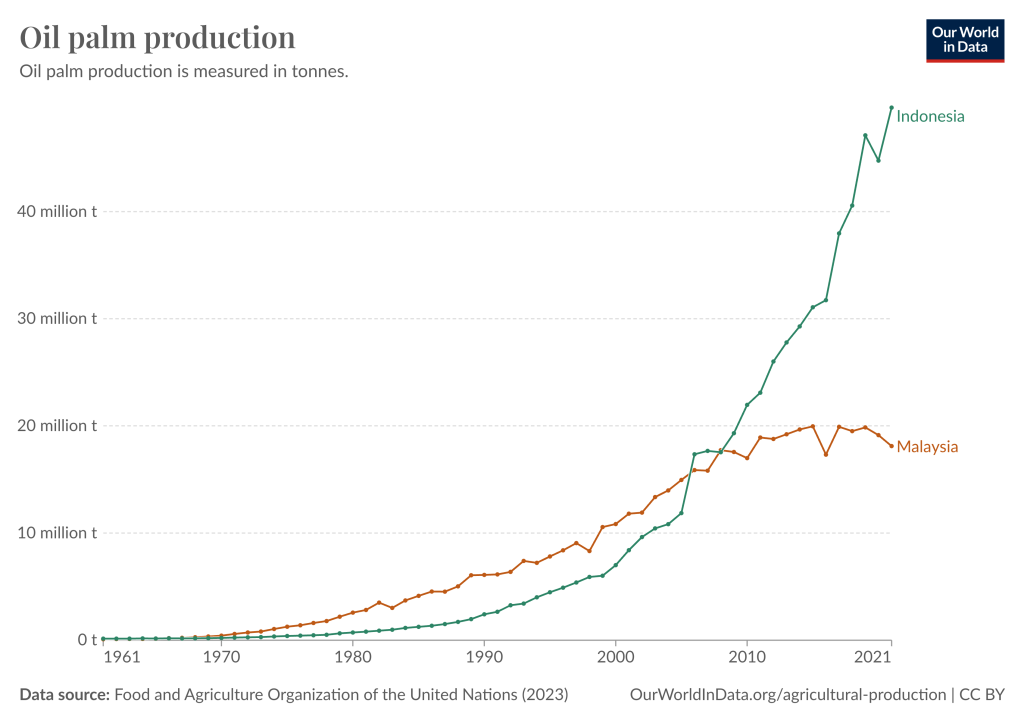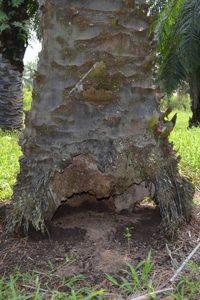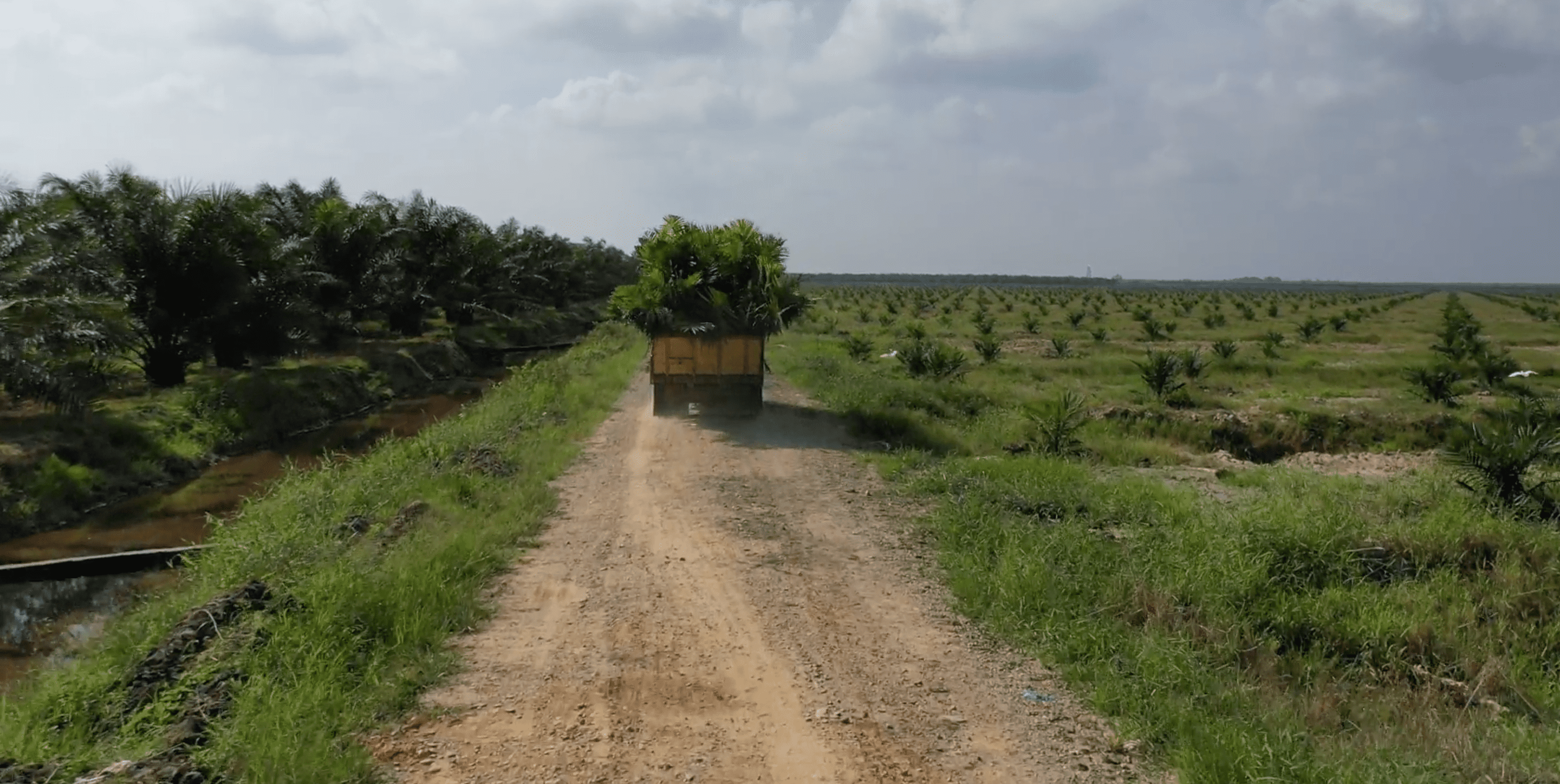Indonesia and Malaysia, two critical Southeast Asian players, dominate the global palm oil market, producing 84% of the world’s supply. Indonesia leads with a 57% contribution, thanks to its status as the world’s largest archipelago, while Malaysia, known for its rich biodiversity and dynamic cities, follows closely with a 27% share.
Unfortunately, tiny pests like bagworms, rhinoceros beetles, and nettle caterpillars can cause damage to plantations. It’s a bummer, but five specific pests are known to cause considerable palm oil yield reduction in Indonesia and Malaysia.

Top Common Pests in Palm Oil Plantations
How Bagworms Can Damage Palm Oil Trees
Bagworms, especially Metisa plana, are a big problem for palm oil farms. They eat the leaves off the trees, which can hurt the farm’s production and cause a lot of lost money. Here’s why bagworms are so bad for palm oil trees:
– They eat a lot of leaves. It causes the trees to lose up to 40% of their potential crop because they can’t make as much food for themselves through photosynthesis.
– Bagworms breed fast and live short lives, which means their numbers can overgrow and cause even more damage.
– Weather changes can worsen the problem, leading to more bagworms.
What makes bagworms thrive? Well, the temperature is a big deal. If it gets too warm or too cool, it might help them breed more. Also, if there aren’t enough natural predators, bagworms can take over palm oil farms. The damage they do includes:
– Eating the leaves can seriously reduce how much palm oil the trees produce.
– Weakening the trees makes them more likely to get sick or have other pest problems.
– Wrapping their cocoons in silk around the tree branches, which can kill parts of the tree.
– Causing “bronzing,” where the leaves turn brown and die if the bagworms aren’t stopped.
The Impact of Rhinoceros Beetles on Palm Oil Plantations
Rhinoceros beetles challenge young palm oil trees by burrowing into the crown’s center, harming growing tissues, and feeding on the sap. This activity disrupts the development of leaves, creating V-shaped cuts or holes in the midrib as the leaves mature and unfold. Signs of damage include holes at the base of the frond, fronds bending or breaking at the damaged area, deformed new fronds, and, in severe cases, the death of the young palm if the beetle consumes the growing point. In mature palms infected with Oryctes, the leaves take on a distinctive shape with missing chunks, and the leaf tips may appear triangular. A severe infestation can result in the loss of numerous young palms.
The reproductive cycle of the Rhinoceros Beetle goes through four primary stages: egg, larva, pupa, and adult. A female beetle starts the cycle by laying eggs in decaying organic material, such as compost or rotting wood. These eggs then hatch into larvae, white, C-shaped grubs with distinct heads and six legs. After several molts, they grow into their adult form. Typically, a female lays around 50 eggs. These species’ lifespan varies, typically from one to two years. This fascinating lifecycle presents a challenge for palm oil cultivation, underscoring the importance of effective management strategies.
Nettle Caterpillar Infestations
The Nettle caterpillar is a big problem for palm oil farms, especially in Malaysia. These caterpillars, mainly Darna spp. and Setora nitens, have a big appetite and can cause much damage. Depending on the type, they can live for about 3 to 4 months. The Darna caterpillars can grow up to about an inch long, and the Setora nitens can get even more significant, up to about an inch and a half. The female caterpillars lay lots of eggs, around 479 on average, and about 55% of these eggs hatch.
These caterpillars eat a lot and can do more harm than other pests like the bagworm. They can strip the leaves off the plants, and if about 10-13% of a plant is eaten up by bagworms, these caterpillars can cause the farm to lose about 33-40% of its yield.
Palm oil tree infections caused by caterpillars have worsened because they use solid chemicals like cypermethrin, do not keep soundtrack of their numbers, and do not treat them properly. They munch on the palm oil plant leaves, damaging and eventually killing the plants. Farmers can use specific insecticides, like carbamates and organophosphates, to fight off these caterpillars.
How Rats Affect the Health of Palm Oil Plantations
Rats are a significant problem in palm oil plantations because they damage the crops. Their breeding habits and survival instincts make them formidable pests. The plantations offer an ideal environment for rats, providing abundant food and shelter.
Rats find a plentiful food supply in palm oil plantations, primarily from palm fruits. The dense undergrowth gives them ample shelter, shielding them from predators and harsh weather. This abundance of food and shelter allows for rapid reproduction and exponential population growth. Uncontrolled rat populations can spiral out of control, significantly impacting the economy with estimated crop losses of 7-10%.
Rats cause various damages in palm oil plantations. They consume palm fruits, reducing the harvest quantity and impacting current and future production. Targeting the bases of immature palms, rats eat the meristematic tissue essential for growth, which can lead to the palms’ death in severe cases. Rat attacks even threaten palm oil seedlings in nurseries, damaging them to the point where growth is retarded, or the seedlings die, affecting future plantation yields.
Stem Rot in Palm Oil Trees

Stem rot, also known as basal stem rot or Ganoderma wilt, is a severe fungal disease in palm oil, including coconut palm, areca nut palm, and palm oil trees. The fungus Ganoderma zonatum causes the disease, attacking the base of the tree up to 3-4 inches above the ground. It destroys the palm tree’s woody tissue, leading to the tree’s inability to transport water up the stem.
The disease targets weak palm trees, affecting the roots, stems, and leaves. Stunted growth in your palm tree could indicate the presence of this disease. For treatment, apply a fungicide drench to the soil every two weeks for at least two months. Periodically, it would help if you also uncovered the roots with a trowel to check for additional rot. If the rot has spread, you must dispose of the plant in a plastic bag to prevent the fungus from spreading to other plants.
(Basal stem rot (BSR) and upper stem rot (USR) caused by Ganoderma. Image source http://sawitsecure.mpob.gov.my/ganoderma-basal-stem-rot/)
Early detection and treatment are vital in managing this disease. If you suspect your palm tree is affected, it’s wise to consult with a professional arborist or plant disease specialist. They can offer suitable treatment options and care advice to aid in your palm tree’s recovery and prevent future infections. Remember, vigilance and prompt action are essential in maintaining the health of your palm tree at the first sign of trouble.
Preventing Palm Oil Disease Outbreaks Using Drone Technology
Drone spraying is a way to treat crops using uncrewed aerial vehicles (UAVs) to spread pesticides, herbicides, or other solutions. The technique is beneficial for palm oil plantations because it can prevent disease outbreaks.
Drones have robust sensors and imaging equipment that can detect early signs of disease in palm oil trees. It allows early intervention to stop the disease from spreading to other trees. Drones can apply targeted treatments to the affected trees if a disease is detected. It reduces the amount of chemicals used and minimizes exposure to healthy trees.
For example, drones can protect immature oil palm trees from rhinoceros beetles. Plantation owners usually use crop protection services that employ drone technology. Here’s how Terra agri agriculture spraying drones work to combat pests and disease in palm oil plantations.

